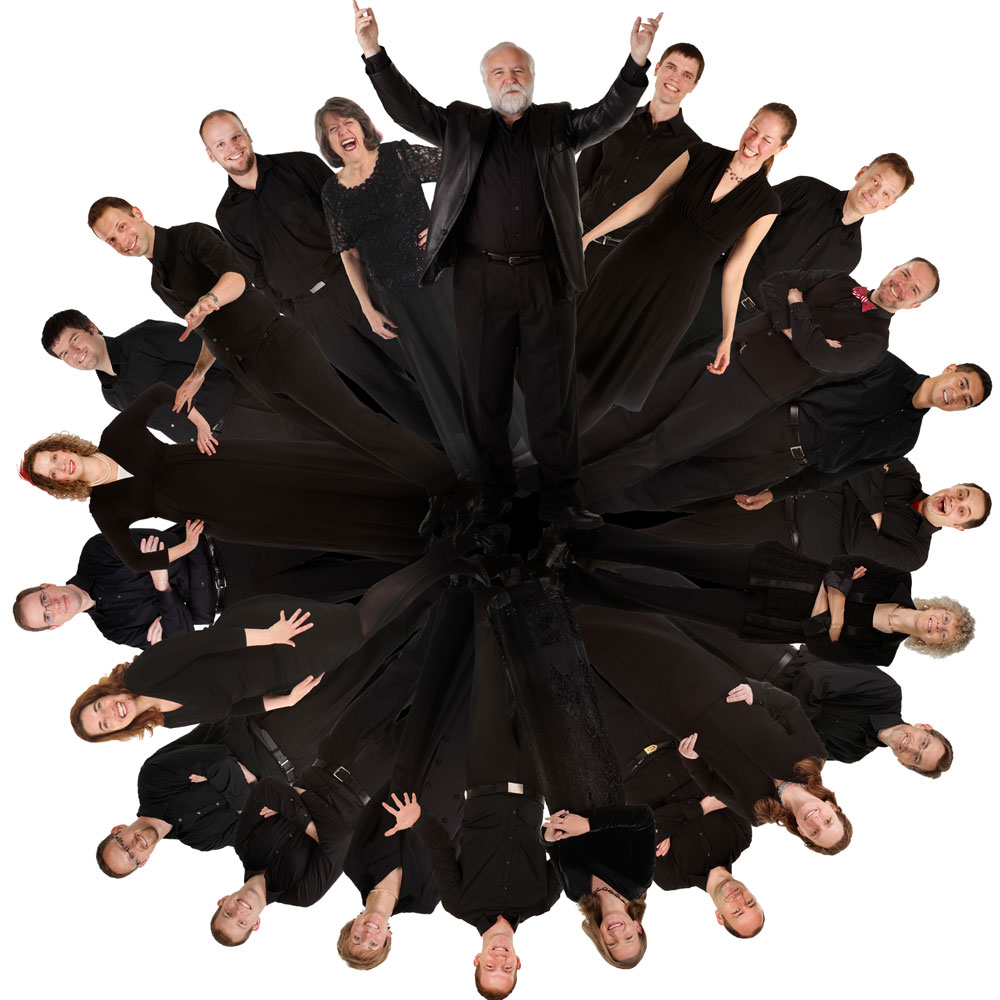by Daniel Hathaway

In other hands, the program, titled “The Flower of Flanders: Masterpieces of Renaissance Polyphony,” might have been like sitting through a fact-filled lecture in a music history course. In Duffins’s case, it turned out to be more like visiting a beautifully-curated, special exhibit in an art museum, perhaps one where the sixteen “pictures” on the walls, like something out of Harry Potter, came alive and sang to you as you approached them, each revealing the distinct personalities of their creators as well as the surprising range of their individual musical styles.
Most of those composers — DuFay, Ockeghem, Josquin, de la Rue, Isaac, Mouton, Obrecht, Brumel, Willaert, Gombert, Arcadelt, Clement, de Rore, de Monte, de Wert and Lassus — didn’t hang around Flanders for long, but found employment at the Vatican and in the courts of wealthy patrons throughout Europe. All were masters of the rigorous counterpoint that provides the bones for their compositions, but they were also very good at fleshing them out with alluring — or at least highly expressive — music.
For example, the opening work, Guillaume DuFay’s Nuper rosarum flores, written for the dedication of Brunelleschi’s dome for the cathedral in Florence in 1436, uses as its underlying structure mathematical ratios similar to those of Solomon’s Temple in Jerusalem and the Duomo in Florence, but you’d never know that from the florid, expressive polyphony that Quire so appealingly brought to life on Friday.
The following work, Josquin Desprez’s Gaude virgo, was sprightly and syncopated, while Pierre de la Rue’s Plorer, gemier was remarkably consonant in spite of its anguished text. A second lament, Henricus Isaac’s Quis dabit capiti meo aquam, a grief-filled tombeau to Lorenzo de’ Medici, jerked the listener about with strange juxtapositions of chords.
Jean Mouton’s Nesciens mater concealed its namesake plainchant in a beautiful web of strict polyphony, while Jacob Obrecht’s festive Laudes Christo — a standout — explored the whole of Quire’s vocal range.
Having traveled half-way around this fascinating sound gallery, we were surprised by the sudden appearance of a virtual Renaissance flash-mob which had assembled to sing Antoine Brumel’s Kyrie from the Missa Et ecce terrae motus. Quire shuffled its lineup for this extraordinary piece, which Brumel wrote for twelve separate voice parts. The effect when those dozen voices begin imitating each other at close time intervals was thrilling, and the contrast where Brumel wrote blocks of music for upper and lower voices answering each other was refreshing.
Regrouping after intermission, Duffin led Quire through the rest of this rich sound gallery: Adrian Willaert’s Verbum bonum, with its pungent cross-releations; the elegant, descending melodic sequences of Musae Jovis, Nicholas Gombert’s memorial to Josquin; Jaacob Arcadelt’s mellifluous setting of Pater noster, and Jacobus Clemens non Papa’s gorgeous Ego flos campi.
Two one-on-a-voice pieces, Cipriano de Rore’s 7-voice Descendi in hortum meum, and Philippe de Monte’s 8-part O suavitas et dulcedo gave Quire the opportunity to demonstrate the high quality of its individual singers.
The last stop on this walkaround featured Giaches de Wert’s madrigalesque and remarkably chromatic (for its time) Adesto dolori meo, followed by the final piece, Roland de Lassus’s lovely ode to his chosen art, Musica dei donum.
Quire, which becomes more impressive with each of its concerts, sang this demanding, 75-minute program with flawless vocal technique, layering complicated polyphonic lines with admirable transparency and producing an even, blended tone no matter what the texture.
Conducting with an unerring sense of pace, Duffin shaped each piece lovingly and drew a wide range of dynamics from the ensemble. He was also a helpful, silent docent for the Franco-Flemish exhibition; his engaging program notes were scholarly enough, to be sure, but humanized with charming personal details about the composers.
At the end, the good-sized audience indicated that sixteen pieces weren’t quite enough, and Quire sent them home with a strong, clear performance of Josquin’s famous Ave Maria. Had there been a second encore, the crickets chirping merrily outside the window by my pew would surely have suggested Josquin’s El grillo.
The program will be repeated on Saturday, September 27 at 7:30 pm at Mary Queen of Peace Church in Old Brooklyn and on Sunday, September 28 at 4:00 pm at Historic St. Peter Church in downtown Cleveland.
Published on ClevelandClassical.com September 27, 2014.
Click here for a printable copy of this article.



